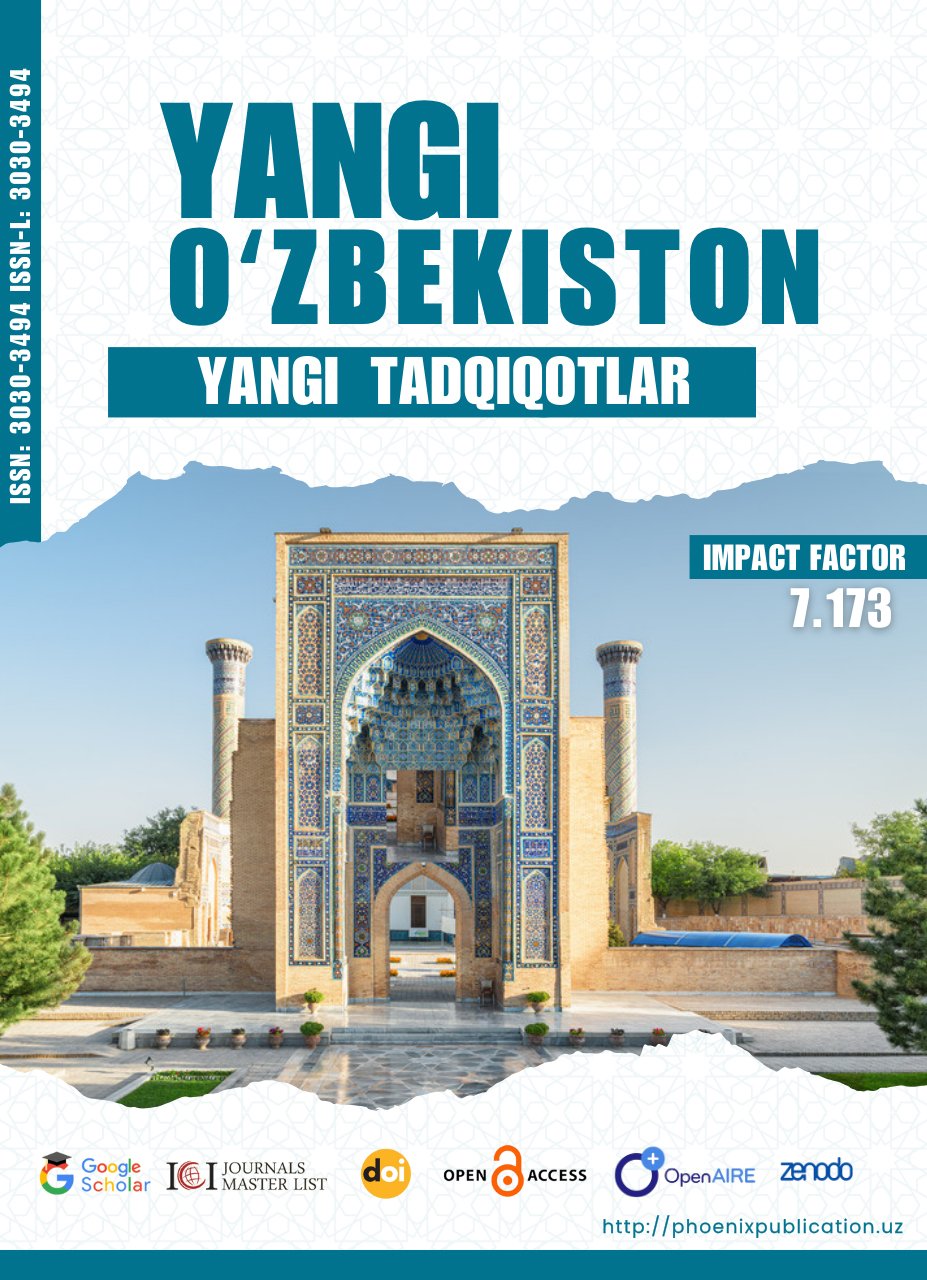Abstract
The rapid expansion of digital technologies has become a pivotal force in reshaping Uzbekistan’s economic landscape. Over the past decade, digital transformation has significantly contributed to the country’s GDP growth, improved public service delivery, and fostered new opportunities in fintech, e-commerce, and e-government sectors. This study investigates the impact of digital technologies on Uzbekistan’s economic development by analyzing updated 2024 data and evaluating key achievements, challenges, and strategic prospects.
Using a mixed-methods approach, the research combines quantitative indicators—such as internet penetration, digital financial service adoption, and the share of the digital economy in GDP—with qualitative analysis of national strategies and policy frameworks. Results show that internet access reached 86% in 2024, fintech usage rose to 79%, and the contribution of the digital sector to GDP climbed to 5.5%. These developments highlight growing financial inclusion, increased efficiency, and modernization across both public and private sectors.
Nevertheless, the digital transition faces constraints, including rural infrastructure gaps, rising cybersecurity threats, and a shortage of skilled IT professionals. Drawing comparative insights from successful models like Estonia and South Korea, the study outlines targeted policy recommendations to ensure sustainable digital economic growth. These include expanding broadband access, strengthening cybersecurity frameworks, and investing in digital education and innovation ecosystems.
This paper provides a comprehensive overview of Uzbekistan’s digital transformation trajectory and offers a forward-looking roadmap to maximize the long-term benefits of technology-driven development.
References
1. Abdurakhmonov, K., & Turaev, N. (2022). Digital transformation in Uzbekistan: Challenges and opportunities. Central Asian Journal of Economic Studies, 15(2), 45–60.
2. Asian Development Bank. (2021). Digital transformation in Central Asia: Strategies for economic growth. Manila: ADB Publications.
3. Brynjolfsson, E., & McAfee, A. (2014). The second machine age: Work, progress, and prosperity in a time of brilliant technologies. W.W. Norton & Company.
4. Creswell, J. W. (2009). Research design: Qualitative, quantitative, and mixed methods approaches (3rd ed.). SAGE Publications.
5. Manyika, J., Chui, M., Bughin, J., Dobbs, R., Bisson, P., & Marrs, A. (2016). Digital globalization: The new era of global flows. McKinsey Global Institute.
6. Ministry for the Development of Information Technologies and Communications of Uzbekistan. (2023). Annual report on Uzbekistan’s digital economy. Tashkent: Government Press.
7. OECD. (2021). The digital economy outlook 2021: Policy and regulatory frameworks. Paris: OECD Publishing.
8. State Committee on Statistics of Uzbekistan. (2023). Economic performance and digital sector contributions: Statistical yearbook 2023. Tashkent: Government Statistics Agency.
9. World Bank. (2020). Digital transformation for inclusive growth: Policy recommendations for emerging economies. Washington, D.C.: World Bank Publications.
10. World Bank. (2022). Ease of doing business report: The impact of digital governance reforms in Uzbekistan. Washington, D.C.: World Bank Publications.
